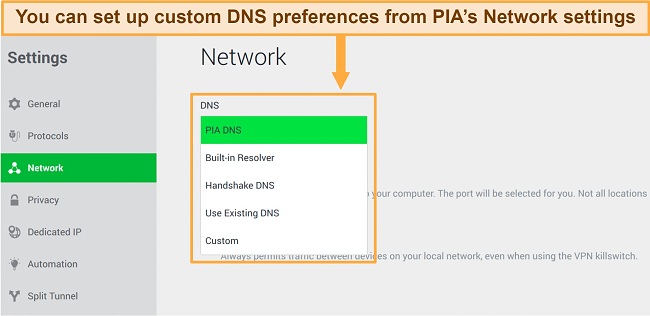Featured
Table of Contents
Troubleshooting Vpn Client Disconnection
The Routing and Remote Gain access to snap-in lives within the Microsoft Management Console, called the MMC. There are multiple ways to access the MMC. You can pick the console from the Start menu's Programs options, within the Administrative Tools folder within Windows server's Control Panel or by typing mmc at a command timely.
As Tech, Republic's Brandon Vigliarolo shows within his video at the start of this article, the Providers console shows the status of the Routing and Remote Access entry. From within the Solutions console and with the Routing and Remote Access entry highlighted, you can click Start the Service or right-click the entry and choose Restart.
Often the VPN customer and VPN server are set to utilizing various authentication techniques. Validate whether an authentication error is the issue by opening the server console. Yet another technique of accessing the MMC is to type Control+R to open a command timely in which you can type mmc and hit Go into or click OK.
If the entry isn't present, click File, choose Add/Remove Snap-in, select the Routing and Remote Access alternative from the options and click Include, then OK. With the Routing and Remote Gain access to snap-in included, right-click on the VPN server and click Properties. Then, review the Security tab to verify the authentication technique.
Common Vpn Connectivity Issues
Guarantee the VPN client is set to the authentication approach specified within the Security tab. Generally the products just evaluated are accountable for the majority of VPN connection rejection mistakes. Other principles must be correct, too. For example, if the Windows Server hosting the VPN hasn't joined the Windows domain, the server will be unable to confirm logins.
IP addresses are another fundamental element for which administration need to be effectively set. Each Web-based VPN connection generally utilizes 2 various IP addresses for the VPN customer computer. The very first IP address is the one that was appointed by the client's ISP. This is the IP address that's used to develop the preliminary TCP/IP connection to the VPN server over the Internet.

This IP address typically has the very same subnet as the local network and thus permits the customer to communicate with the local network. When you established the VPN server, you need to configure a DHCP server to designate addresses to clients, or you can create a bank of IP addresses to designate to clients directly from the VPN server.


If this option is chosen and the efficient remote gain access to policy is set to permit remote gain access to, the user will be able to connect to the VPN. I have been not able to re-create the circumstance personally, I have actually heard reports that a bug exists in older Windows servers that can cause the connection to be accepted even if the efficient remote gain access to policy is set to reject a user's connection.
Vpn Connectivity And Troubleshooting Guide

Another typical VPN problem is that a connection is successfully developed however the remote user is unable to access the network beyond the VPN server. Without a doubt, the most common cause of this problem is that approval hasn't been granted for the user to access the whole network. To allow a user to access the entire network, go to the Routing and Remote Access console and right-click on the VPN server that's having the problem.
At the top of the IP tab is an Enable IP Routing check box. If this check box is enabled, VPN users will be able to access the remainder of the network, assuming network firewall softwares and security-as-a-service settings permit. If the checkbox is not selected, these users will have the ability to access only the VPN server, however nothing beyond.
If a user is calling directly into the VPN server, it's normally best to configure a static route between the customer and the server. You can configure a static path by going to the Dial In tab of the user's properties sheet in Active Directory site Users and Computers and selecting the Apply A Static Route check box.
Click the Add Route button and after that enter the location IP address and network mask in the area offered. The metric must be left at 1. If you're utilizing a DHCP server to designate IP addresses to customers, there are a number of other problems that might trigger users not to be able to surpass the VPN server.
Vpn Not Connecting? How To Fix This & Other Common ...
If the DHCP server appoints the user an IP address that is currently in use somewhere else on the network, Windows will find the dispute and avoid the user from accessing the rest of the network. Another common problem is the user not getting an address at all. The majority of the time, if the DHCP server can't assign the user an IP address, the connection will not make it this far.
If the client is assigned an address in a variety that's not present within the system's routing tables, the user will be not able to navigate the network beyond the VPN server. Make sure the resources the user is attempting to gain access to are really on the network to which the user is linking.
A VPN connection to the other subnet might, in truth, be required. A firewall software or security as a service solution could also be to blame, so do not forget to examine those solutions' settings, if such components are present between the VPN server and the resources the user looks for to reach.
The very first possibility is that one or more of the routers involved is carrying out IP package filtering. IP package filtering might avoid IP tunnel traffic. I suggest checking the customer, the server and any makers in between for IP package filters. You can do this by clicking the Advanced button on each maker's TCP/IP Residences sheet, choosing the Options tab from the Advanced TCP/IP Settings Residence sheet, choosing TCP/IP Filtering and clicking the Characteristics button.
Latest Posts
10 Best Vpn Services For 2023 - Top Vpns Compared
Best Business Vpn In 2023 [Ranked & Reviewed]
Best Vpn Services 2023 — Today's Top Picks